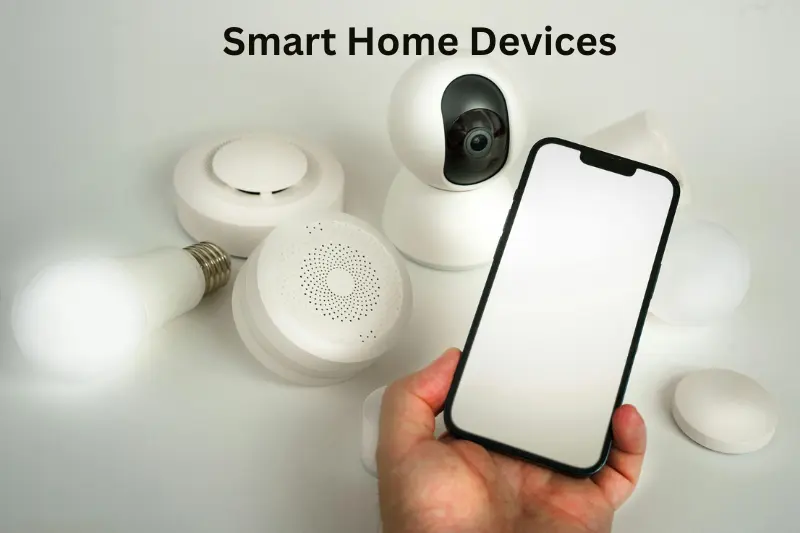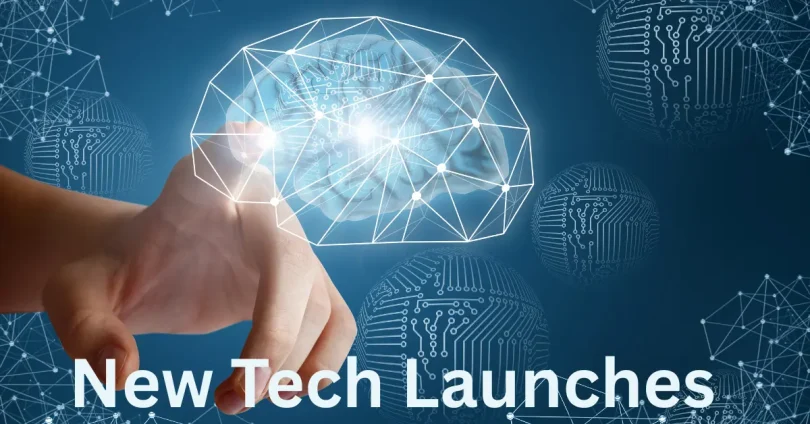Staying updated in the fast-paced world of technology isn’t just a habit anymore—it’s an absolute necessity. From smartphones that practically think for you to AI systems that are revolutionizing how we work, shop, and even socialize, innovation is happening at a pace that’s hard to keep up with. Every day seems to bring a wave of announcements, jaw-dropping prototypes, and market-ready marvels. These breakthroughs affect every aspect of our lives, from personal gadgets and smart homes to electric vehicles and space exploration. Amid all this rapid evolution, New tech launches are the heartbeat of progress. They drive industries forward, spark new trends, and help individuals make informed decisions about the tools they use daily.
Whether you’re a tech lover, a savvy investor, a curious mind, or someone who just wants the best devices, staying ahead of the curve can give you a serious advantage.
Mobile and Smartphone Innovations

Foldables and Rollables
- Foldable phones have come a long way from being fragile experiments to becoming practical and premium alternatives to traditional smartphones. The latest models boast ultra-strong hinges, better display protection with ultra-thin glass, and designs that now feel just as natural as any slab phone.
- Rollable displays are emerging from the concept phase with promising prototypes that dynamically expand the screen size. This could soon offer a seamless way to move from compact phone usage to a full tablet experience without creases or bulky designs.
AI-Powered Features
- Smartphones are now embedded with neural processing units (NPUs), enabling features like real-time video enhancement, object recognition, and even AI-generated art—all handled locally on your device.
- Contextual voice assistants no longer just answer questions; they predict user intent, suggest follow-ups, and integrate across multiple apps for a unified smart experience.
Camera Upgrades
- Cameras now go beyond megapixels. Innovations like periscope lenses offer massive zoom ranges, while computational photography techniques enhance images in real-time.
- Night modes have become so refined that low-light shots can rival daylight photos. AI-assisted scene optimization adjusts color, contrast, and clarity depending on the environment.
Wearable Technology
Smartwatches and Fitness Bands
- Wearables now include features once reserved for medical-grade devices. With sensors for ECG, blood oxygen levels, stress tracking, and even skin temperature, they provide a holistic view of health.
- Integration with health apps and telemedicine platforms makes it possible to get personalized health insights and proactive wellness guidance based on continuous data monitoring.
Augmented Reality Glasses
- AR glasses are more than just futuristic eyewear. They now offer turn-by-turn navigation, on-the-go translations, and immersive virtual meetings.
- Industrial applications are exploding as companies use AR for remote support, digital twins, and virtual collaboration in construction, manufacturing, and healthcare.
Hearables
- Next-gen earbuds not only deliver incredible audio but also monitor heart rate, temperature, and hydration levels.
- Features like 360-degree spatial audio, intelligent noise canceling, and real-time voice translation make these more than just headphones—they’re wearable smart assistants.
Computing and Laptops
AI-Powered Laptops
- AI-integrated laptops can perform content creation tasks like video editing, design rendering, and code suggestion with improved efficiency.
- Adaptive performance tuning adjusts system resources based on user habits, reducing energy waste and enhancing productivity.
Foldable and Dual-Screen Devices
- Foldable laptops now offer seamless transitions between tablet, laptop, and tent modes. Stylus input, multi-window multitasking, and advanced gesture controls make them power tools for creatives and professionals.
- Dual-screen devices provide expanded workspaces, allowing users to write code on one screen while previewing results on the other or edit videos with dedicated timelines.
Gaming Laptops
- Gaming laptops are now pushing the boundaries of desktop-level performance. Liquid metal cooling, AI-driven fan curves, and hardware ray tracing create an immersive gaming experience.
- New displays include OLED panels, 240Hz refresh rates, and variable refresh sync for ultra-responsive visuals and reduced input lag.
Smart Home Devices

AI Home Assistants
- Today’s smart hubs do more than answer trivia—they become central command units for the whole house, learning user behavior and optimizing routines accordingly.
- From automating lights based on your location to suggesting shopping lists from your usage habits, AI is bringing predictive intelligence into everyday living.
Smart Appliances
- Refrigerators now use cameras and barcode scanners to track expiration dates, suggest meals, and even order groceries when you’re low.
- Smart ovens can recognize dishes, adjust cooking temperatures, and send alerts when your meal is perfectly done.
Home Security
- Face recognition, number plate detection, and AI-based anomaly detection in cameras make home surveillance smarter than ever.
- Integration with emergency services and app-based remote access offers enhanced control and peace of mind whether you’re inside or away.
Automotive Technology
Electric Vehicles (EVs)
- EVs are advancing with battery chemistries like solid-state lithium, providing longer ranges, safer usage, and faster charging times.
- Smart dashboards now offer real-time efficiency insights, AI-enhanced route planning, and entertainment options synced with your smart home ecosystem.
Autonomous Driving
- With the rise of AI, autonomous systems can now interpret complex driving environments, including busy intersections and unpredictable weather.
- Driver-assist tech has reached Level 3 autonomy in some regions, allowing hands-free operation in controlled environments.
In-Car Entertainment
- Infotainment systems now support gaming, streaming, productivity apps, and real-time diagnostics.
- Voice-driven interfaces and AI copilots improve driver safety while enhancing the in-car user experience.
Artificial Intelligence and Robotics
Personal AI Companions
- AI companions are now used not only for productivity but also for mental health, offering therapeutic conversations and emotional feedback.
- They analyze speech patterns, mood changes, and behavior trends to offer meaningful support and actionable insights.
Industrial Robots
- Robots are becoming more autonomous, learning from experience and adapting workflows in industries like agriculture, logistics, and surgery.
- Cobots (collaborative robots) are designed to work safely alongside humans, reducing physical strain and improving accuracy.
AI Content Creators
- AI can now generate realistic human voices, design graphics, produce music, and even edit films with minimal human intervention.
- Businesses are using these tools for hyper-personalized marketing campaigns, product launches, and social media strategies.
Health Tech
Remote Health Monitoring
- Real-time health tracking now includes alerts for anomalies, sleep analysis, hydration reminders, and medication schedules.
- Integration with AI provides doctors with predictive diagnostics, improving early detection and prevention.
Telemedicine Platforms
- AI-driven virtual consultations are now backed by electronic health records, wearable data, and machine learning diagnostic tools.
- These platforms support chronic disease management, mental health check-ins, and emergency triaging.
Medical Imaging and Diagnosis
- Breakthroughs in AI imaging allow for rapid, accurate scans that help detect cancer, stroke, and even retinal diseases within minutes.
- Portable imaging devices are revolutionizing healthcare access in remote or under-resourced areas.
One read, and you’ll see things differently!
Top Android Apps That’ll Make Life Easier Today
“iOS App Reviews: Discover the Best Apps Today!”
Essential Must-Have Apps to Download Today for Better Life!
“Best Free Software Tools to Boost Your Productivity Today”
Entertainment and Media
Streaming Devices
- Devices now support advanced codecs, faster streaming, and tailored user profiles for different tastes and preferences.
- Features like voice search, content previews, and integration with home systems make navigation a breeze.
Gaming Consoles
- Cloud-based gaming systems and cross-platform compatibility make modern consoles versatile entertainment units.
- Enhanced haptics, modular accessories, and augmented reality capabilities redefine how users interact with games.
Virtual and Augmented Reality
- Mixed reality headsets now blend VR and AR experiences, allowing users to toggle between physical and virtual environments seamlessly.
- Educational platforms are leveraging VR for training simulations, virtual field trips, and interactive learning modules.
Emerging Technologies
Quantum Computing
- New quantum processors can now solve logistical problems in seconds that would take classical computers days.
- Companies are creating quantum-as-a-service platforms, opening up access to advanced computational tools for research and enterprise.
Space Tech
- Compact satellite constellations are enabling low-latency internet globally, even in remote regions.
- Reusable launch vehicles and commercial spaceflights are transforming the aerospace industry into a viable business frontier.
Green Tech
- AI-driven energy grids optimize power distribution, reducing waste and costs.
- Innovations like biodegradable electronics, atmospheric water generators, and self-healing materials are leading sustainability efforts.
Conclusion
Technology is rewriting our world, one innovation at a time. From the way we communicate and entertain ourselves to how we travel and heal, each advancement contributes to a smarter, more connected future. These breakthroughs don’t just represent better gadgets—they reflect a shift in how we live and what we value. As each sector evolves, opportunities emerge for individuals, companies, and communities to embrace change and thrive. Staying tuned to New tech launches means staying empowered, informed, and ready for whatever comes next. Whether you’re a casual observer or a tech enthusiast, there’s always something new to explore, adopt, and be inspired by.
FAQs
What are the most exciting tech innovations in 2025?
Breakthroughs like AI-powered laptops, foldable smartphones, and wearable health tech are stealing the spotlight with smarter features and better user experiences.
Are foldable devices durable now?
Yes, the latest foldable phones and laptops use stronger materials and improved hinges, making them much more reliable than earlier versions.
How is AI changing everyday devices?
AI now powers features like personalized assistants, adaptive performance, and real-time diagnostics, making gadgets smarter and more intuitive.
Is wearable tech useful beyond fitness?
Absolutely! Modern wearables track stress, sleep, and even detect health anomalies, offering wellness insights and early alerts for medical conditions.
What role does technology play in sustainability?
Green tech innovations, like smart energy grids and biodegradable electronics, help reduce environmental impact while improving efficiency.




